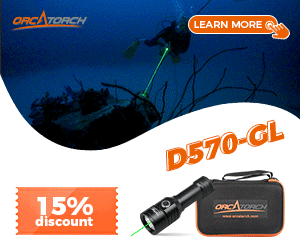SciFiDiver
Registered

With all the incredible diving around Mexico's Baja Peninsula, why would anyone get on a boat and travel 240 miles south of the peninsula's southern tip to dive? Well, it turns out that there are some really big reasons! Big as in whales, sharks and huge manta rays. For divers seeking some adventure, a live-aboard trip to the remote island of Socorro is a must.
The Revillagigedo Archipelago, known world-wide as the Mexican Galapagos, is a group of four volcanic islands in the Pacific Ocean recognized for its unique ecosystem and large concentrations of pelagic species. Most of the dive activity in the Archipelago occurs around Socorro, an island that rises abruptly from the sea to 1050 meters (3,445 feet) above sea level at its summit. The island's Mexican naval base is heavily involved in preservation efforts, making Socorro Island an ideal location for diving.
Socorro is approximately 386 km (240 miles) south of Cabo San Lucas and 600 km (372 miles) west of the Mexican mainland. It is only accessible by long-range, live-aboard boats which depart Cabo San Lucas November through May when the seas are the calmest. Tours typically last from 8 to 9 days and include 6 or 7 days of diving because the crossing between Cabo and the island takes about twenty-four hours.
The live-aboard vessels that serve Socorro range from 33 meters (110 feet) to 35 meters (116 feet) and offer all the luxuries a diver could want including resident chefs, air conditioning and comfortable state rooms. The diving is considered intermediate level but less experienced divers are welcome on most dives.
Water temperatures at Socorro range from 28 C (82 F) in November down to 21 C (70 F) in February and rise back to 25 C (77 F) by mid-May. Visibilities vary, but they can be as much as 40 meters (130 feet) in the strikingly blue waters.
Okay, so why go to the Socorro area in the first place? As mentioned above, there are a number of large species that inhabit the waters around the island and they are often found in large quantities. One of the most amazing creatures you will see is the Giant Pacific manta ray, which can grow to 7.5 meters (21 feet), wingtip to wingtip. These gentle giants are diver-friendly and up-close-and-personal encounters are quite common.
Bottlenose dolphins have always been spotted at Socorro, but until recently they were ÅÔhy and kept their distance. However, according to Mike Lever, captain of the Nautilus Explorer, all that changed about three years ago when they began imitating the mantas by interacting with divers and "even hanging on ascent lines with divers at their safety stop. There is nothing quite like seeing a dolphin hanging at a safety stop with the ascent rope tucked underneath its pectoral fin!"
At least seven species of sharks inhabit the waters around Socorro, including Silky, Galapagos, Hammerhead, Whitetip, Silvertip, Reef and Tiger. Whale sharks, a long as 13 meters (40 feet) can be seen in the early part of the season and the winter months bring more than 1,200 humpback whales to the area to breed and calve.
You can also expect to see large yellow-fin tuna (the world record was caught near Socorro), wahoo, turtles, octopuses and large schools of jack. It's little wonder that Socorro has become known as the best big animal diving spot on earth! For underwater photographers and videographers, Socorro is a true paradise. Check out Jason Heller's recent expedition to Socorro aboard the Solmar V at Video: DPG Expedition Report, Socorro :: DivePhotoGuide.com - The Underwater Photo & Video Portal. He's a professional underwater photographer and heÃÔ posted some great photos from his trip.
As I mentioned earlier, the only way to experience the incredible diving at Socorro is to book a trip with one of the excellent live-aboards that serve the area, so here are the links you will need. The rest is up to you!
Live-Aboard Vessels Serving Socorro Island
Sea Escape: Club Cantamar, Liveaboard Trips
Solmar V: Socorro Liveaboard diving aboard Solmar V - Giant Mantas, Sharks and Humpback Whales at the Socorro Islands and Sea of Cortez
Nautilus Explorer: http://www.nautilusexplorer.com
R.J. Archer is a certified diver and the founder of BajaDivers.com, a Web site dedicated to promoting scuba diving along the 2,000-mile coastline of MexicoÃÔ Baja Peninsula. He can be reached by email at rja@bajadivers.com.



